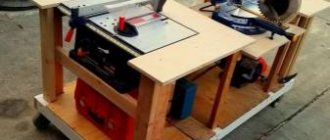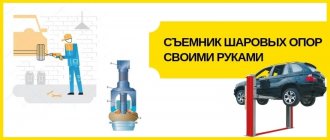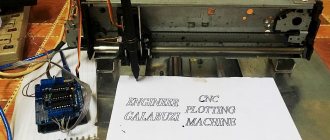An elevator in a private house is not always a luxury, because sometimes you need to move between floors and even go down to the cellar for groceries. And when elderly people live in a cottage, then this is a necessity for them. According to experts, purchasing a factory design is too expensive, and not everyone can afford it. But to develop and build such a structure yourself is quite realistic. Moreover, such structures serve for many years.
And it is important that a self-made elevator in a private house is as safe as possible for all residents. You need to prepare all the necessary material, as well as tools. We will have to try to develop a scheme according to which we can then carry out the work. Preliminary calculations will allow you to understand how much money will be required to develop such a design. There are several options for elevators for a private home. Before installation, you need to decide what is most suitable.
Using an Electric Elevator
This is a bulky structure, which, with the help of a gearbox, begins its movement based on traction cables. But a cabin is first mounted on them, and movement occurs on special rails. This self-made elevator in a private house can reach a certain speed, and it is not small. In this case, you need to find a suitable place for the power unit.
There is one important point: if the entire system is located in the attic, then the load-bearing beams will have to be strengthened, since the load becomes significant. Since the entire structure is pulled by a winch, the sounds will be strong. There are also situations when it breaks (rarely, but this should not be ruled out). Electricity is also considered an important component. It will not be too expensive to make such an elevator in a private house, but in comparison with other devices.
Safety
Be sure to periodically inspect the elevator parts.
We pay special attention to the cable, checking: • presence of lubricant; • uniform laying on the drum; • no kinks or breaks in weaving threads; • serviceability of the cable fastening units on the drum and elevator frame
•
presence of lubricant;
•
uniform laying on the drum;
•
no kinks or breaks in weaving threads;
•
serviceability of the cable fastening units on the drum and elevator frame.
Electromechanical elevator motor with winch
It would be useful to make a simple but effective safety system in case the main cable breaks. To do this, we simply take a pair of ratchets from the inertial seat belts of a passenger car and install a drum with a safety cable between them. Assembling and fastening such a mechanism will not cause any particular difficulties, and its reliability is quite sufficient to support the significant weight of the elevator with a passenger.
In a control unit for a do-it-yourself elevator, it is preferable to use buttons without locking. According to the principle: “pressed - it goes, let go - it doesn’t go.” And be sure to provide an emergency power off button. power supply in case of “stuck” control button.
In addition, be sure to ensure reliable grounding of the elevator electrical equipment.
Leave your tips and comments below. Subscribe to our newsletter. Good luck to you and good luck to your family!
What is pneumatics?
Everyone wants to have something new and modern in their home. It's real. A striking example is the pneumatic elevator. Its operating system is simplified. These are so-called vacuum elevators - they have neither cables nor pulleys. Visually, it is a polycarbonate capsule. Movement occurs due to pressure differences. The pump pumps out air from the upper section and the installation itself begins to move.
Afterwards the air is returned and directed in the opposite direction. This type of elevator for a private home is considered the most relevant. Because no additional installations are needed, and the level of security is high. If during operation the light turns off or the capsule depressurizes, then nothing will happen. The elevator will go down carefully because the air will escape. It is worth noting one important point - the cost of such an installation is high. Even when choosing the simplest elevator with such a system of operation, you need to prepare at least 500 thousand rubles.
Since many people want to create the design with their own hands, it is worth listening to the opinion of experts. They claim that the best and most affordable option is electromechanical. Such a project is affordable and not too expensive in terms of materials. Before you begin, you should figure out how to install an elevator with your own hands.
Trolley design
Start by assembling the frame: insert three 75 cm long crossbars between 130 cm pieces of 40x40 mm timber. Install the middle crossbar 40–45 cm from the bottom edge. Fasten the joints with self-tapping screws, or better yet, assemble the frame using tenon joints.
Attach two 80 cm pieces of timber perpendicular to the frame to the bottom beam, insert a 75 cm long crossbar between their ends and fasten the structure. To strengthen the pallet, make two inclined gussets 60 cm long from timber or boards, cut the edges at an angle of 45°. Attach the gusset to the pallet at a distance of 40 cm from the corner.
Cut a sheet of plywood measuring 83x84 cm and drill holes 20 mm from each edge in 7 cm increments. Through the holes made, screw the bottom of the pallet to the frame with self-tapping screws 45 mm long.
If you plan to increase the load capacity of your cart, the junction of the pallet frame and gussets must be reinforced with overlay plates and angles, and the plywood on the bottom with metal brackets. Attach padlock loops with a tail length of at least 70 mm to the upper corners of the frame. Insert an M14 bolt into the holes and screw a self-locking nut onto it. You need to pass a piece of cable about 2 meters long under the bolts and tie it into a loop, to which the traction rope will be attached through a carabiner or thimble.
What should you not forget?
Every person wonders whether it is safe to build a homemade elevator in a private house? Everyone has their own opinion, but the concern is that if such a device collapses or something fails, there may be casualties. Therefore, it is sometimes better to take and order a design from professionals. Although some people do it themselves, the design lasts for many years and does not fail.
When an elevator appears in a private house, installed with your own hands, it is worth checking it periodically. Each family member should be aware that the elevator is a complex structure and must be handled with special care. In addition, it is worth knowing that an elevator for people differs from a simple lifting elevator. The first one must be installed in compliance with all rules and regulations. The house should be as safe as possible for all its inhabitants. Care must be taken to ensure that the protection is:
- Accidentally entering a traffic block.
- Opening the door while moving.
- Protection from unauthorized movement (if people are not yet inside, but movement has begun).
You can always find information and detailed instructions in the documentation. It is designed with all the conditions and methods. When installing even a small elevator for a private home, do not forget about GOSTs and standards.
Lift-tilter
To avoid costs and a lot of complications, you can give preference to a simple garage lift-tipper. The device will allow you to tilt the car to one side, and the tilt angle can vary from 45° to 60°. This is quite enough for most repair work.
To build such a unit, you will have to create and connect a number of parts: the front pillar, beams (top, bottom, rear), shoe. Various connecting elements will also be required. You will need to work a lot with metal, so you must have a special tool - welding, a grinder and a drill with a set of metal drills. The main material for work is 4 mm steel sheets, angles and bushings.
Creating a Top Beam
Next, proceed directly to creating the top beam. For this, take two 1.5 m corners and weld them into a U-shaped profile. It is also necessary to weld a metal insert in the middle, which will ensure the fixation of the jack. The beam will be ready when you weld a plate of the appropriate length and height to the profile. The result is a rectangular beam. One end of it must be welded tightly - the bushing will be attached to it, and the guides for the jack are welded to the other end.
The platform for the beam is created from a steel sheet. You can bend its sides to get something like a box, or weld the walls of this very structure. Inside the site there will be a piece of wood of the required size, which is fixed with fasteners, and rubber is mounted on top of the wood. The platform is attached to the beam using a pre-welded eye.
Rules and instructions
Oddly enough, there are many emergency and dangerous situations that have already happened more than once. Sometimes hands or feet get stuck in the cracks of the door, or the cabin falls from a height. And children's games with elevators never bring positive stories. All this is taken as a basis in the process of installation work and installations. Such a unit should not cause problems for the owner.
Many people do not agree to ready-made installations due to the need to create a non-standard cabin. But these dimensions should not be made too high. It is much easier to remake a finished structure than to create a full-fledged new elevator that will fully cope with its purpose. Of course, an elevator to the second floor in a private house is a reality, but you shouldn’t forget about safety.
Of course, every person believes that comfortable living conditions should be in any private home. Today, creating a lifting device is not so difficult, but only if all the rules are followed.
What does apilift consist of?
Apilift frame
The base of the frame is metal profile pipes with a cross-section of approximately 25 × 25 mm. The thickness of the pipes will affect the load-carrying capacity and wear resistance of the equipment, and therefore when choosing Apilift it is necessary to clarify the thickness and quality of the profile;
Carriage
The carriage, as a component, takes on the entire load of the hives, and therefore the load is colossal. In addition to the weight load, the carriage on the last transverse stops attaches side clamps that will hold the hive in one position. The central limiter holds a cable that lifts or lowers the hive. The system of push-up levers and clamps is the feature that distinguishes a simple lifting trolley from an Apilift;
Bearings
Four bearings on the bracket and two on the wheels ensure easy control and smooth movement of transport, both loaded with hives and free.
Homemade designs, as a rule, are “customized” to the individual characteristics of the beekeeper, creating the most convenient transport for personal use in specific conditions.
Elevator or lift?
Before starting installation work, you need to answer several questions, one of which is: is such an installation of an elevator required in a private house? When the house is large and a disabled person lives in it, then it will definitely be necessary to create an elevator to improve living conditions. At the same time, some believe that the lift copes with its task and will make living conditions easier. It's worth understanding what the difference is between these two devices.
The lift is often called a small elevator. It is more simplified in its design and is often installed not only inside, but also outside.
How to make an elevator to the basement with your own hands, instructions, diagram
Would it be unusual to hear this? Yes, but this is only if an ordinary staircase leads to the basement.
However, there are craftsmen who have come up with something better! When we bought the house, there was a basement under a canopy - small, but in volume it was quite suitable for storing vegetables and fruits. Everything would be fine, but the entrance to it was made in the form of a hatch and a stepladder.
The idea came to mind to make an electric lift. Then a trip to the basement would look like this: open the hatch cover, stand on the platform, press the button on the control panel, go down to the basement, “rustle” there - for example, pick up a bucket of potatoes, put it on the platform, and go upstairs easily and naturally. In the fall, when we put vegetables into storage, there are no problems either.
Instructions
The base of my lift was a frame welded from channel No. 6 (the configuration is visible from the drawing and photo). A bracket with a pulley, a limit switch and an eye bolt for attaching the end of the cable are attached to the frame at the top. Below, a lower limit switch is attached to the same frame.
The frame is attached with two studs to the concrete floor of the basement. A carriage moves inside the frame, also welded from channel No. 6. There are rollers installed on the carriage on the right and left, which move inside the frame channel as if along guides.
A block of two pulleys is attached to the bottom bar of the carriage. The upper pulley on the frame and two pulleys on the carriage form a chain hoist, which allows you to select the required lifting speed of the platform and ensure sufficient load capacity with a small cable diameter.
The pit is needed so that the carriage has somewhere to go down and so that the loading area reaches the floor. The platform is attached to the carriage (in the figure it is conditionally moved away from the carriage).
Types of lifts
There are several types of such devices:
- Construction. They are found in large stores to pull products from high shelves and deliver them in the right direction.
- For disabled people, so that they can get to the right place without any problems.
- Food, for homes.
These are the main ones, although there are other options (for example, a staircase with an elevator in a private house). The biggest advantage of such a unit is the ability to install such a structure at any time. This will not work with an elevator, because it is complex in its design. Their types are mentioned above. It should be noted that if the house is wooden, then it is difficult to build a full-fledged elevator in it. The only option is a structure for moving things, food (sometimes a pet, but no more).
How to start installation?
The simplest model of elevator to the 2nd floor in a private house is electric. To create, you do not need to purchase or rent special equipment. But you shouldn’t think that everything is so simple and easy - there is a lot of manual work in this process. In addition, you will need to comply with the rules and recommendations of GOST. True, when creating such an installation with your own hands, the result is a high-quality design, even no worse than a factory installation.
You need to decide where exactly to mount the unit. Since the rails will need to be fixed to move the cabin, the walls themselves must be reliable. Sometimes they are even improved or strengthened to create safe movement. In order for a home elevator to move safely in a private home, it is worth considering several points:
- If the cable breaks, there must be a special system that allows the elevator to automatically stop.
- There should be any communication system inside in case the unit stops at an unnecessary moment or between floors.
- The voltage should not exceed 24 Volts, otherwise it is dangerous.
Experts advise entrusting the development of the plan to a professional who has experience in this work, and you can already implement the finished project with your own hands. Today there are not many real masters, but you have to pay for such services. But you shouldn’t save money when looking for a master. Otherwise, the structure will be unreliable and may pose a danger to residents.
What nuances are taken into account?
The question often arises, which door to choose. At the moment there are two types of structures. These are swing and telescopic. But the decision is not made only at personal discretion. Seats in the stopping and boarding area are taken into account. For the first option you need to have more free space. Telescopic is an opportunity not to take up much space in the hall. If there are no problems with space limitations, then you can choose any.
Roller blinds are one of the simplified options in terms of installation and cost. In order for such a structure to move, a winch with a power reserve is mounted. In addition, reliable components are purchased:
- Electrical mechanisms.
- Control station.
- Security nodes.
In addition, the cabin frame is prepared in advance. For this, a metal profile is used (the strongest one is selected), after which it is sheathed with the selected material (wood, plastic, etc.).
Sequence of work
Conventionally, everything goes through several main stages, which must be completely correct:
- Mine formation. This is the longest and most labor-intensive process.
- Fixation of the gearbox, which will be responsible for the movement of the entire device.
- Installation of rails into shaft walls.
- Installation of ventilation slopes; you cannot do without them even when creating a small elevator.
- Calculation and fastening of cables.
- Fixation of the brake system, as well as catchers in case the cable comes off.
- Attaching the counterweight.
- Fastening the cabin and checking the operation of the entire system.
As already noted, the power mechanism can be located in any place accessible to the home. To ensure maximum passenger safety, you need to take a responsible approach to securing the winch. Since an electric elevator is considered the noisiest of all options, it is worth enclosing the starting system in one room and trying to make the room soundproof.
Common models
Of the domestic models, the most popular are the single-seater branded 3449b and the double-seater 3851b. They have one and two consoles. The first lift is more common. It is used on buildings up to 150m high and can lift weights up to 500kg. The lifting mechanism consists of a winch and two drums located under the platform deck. The device is equipped with a 2.2 W electric motor.
A load weighing 500 kg can be lifted at a speed of 5.5 m/min. Domestic models are distinguished by reliability, ease of maintenance and long service life. For installation, consoles are first mounted, counterweights are fixed on them, then a platform is installed on 4 cables on the consoles. Counterweights are suspended from below. If the cable breaks, the brake system is automatically activated.
Common imported models are produced by a Chinese company under the ZLP brand. The most popular lift is the ZLP-630. It has a load capacity of 630 kg and a lifting height of 200 m. ZLPs are also more powerful, for example the ZLP-800. The main advantage is that their design is collapsible.
The platform consists of three sections, so the length of the platform can be changed depending on the number of passengers and cargo that will be lifted.
The platform is made of steel or aluminum. The height of the console can be adjusted. ZLP 630 can adjust the length of the console reach from 120 to 170 cm.











